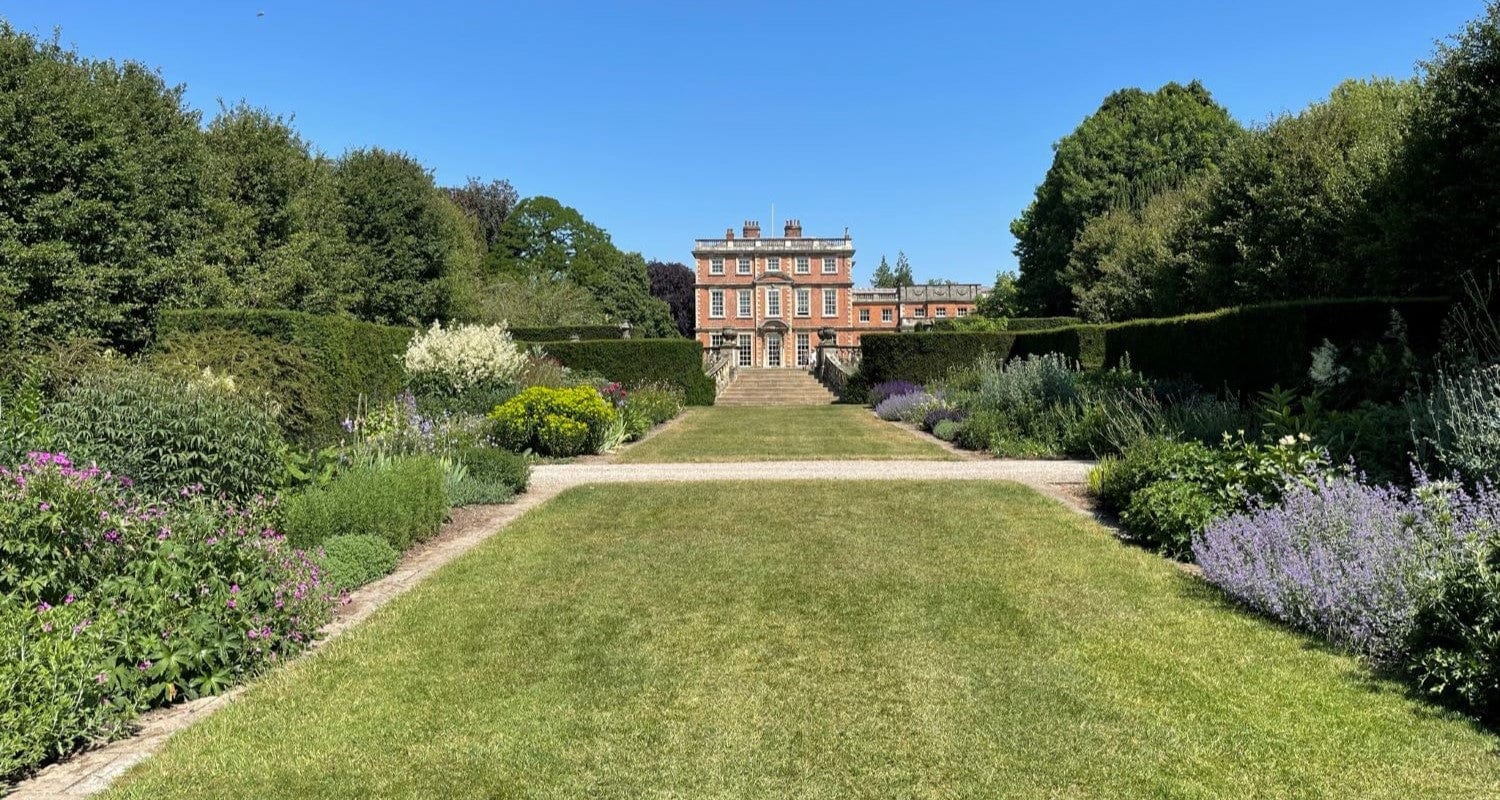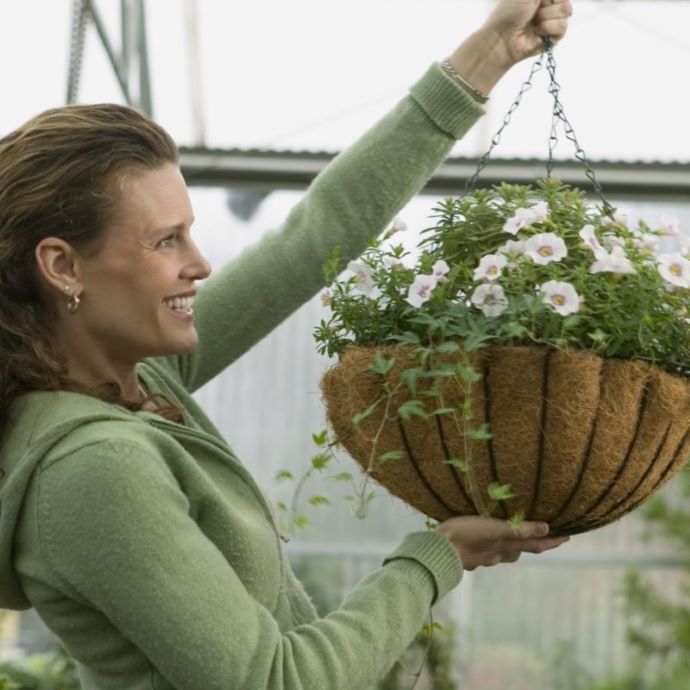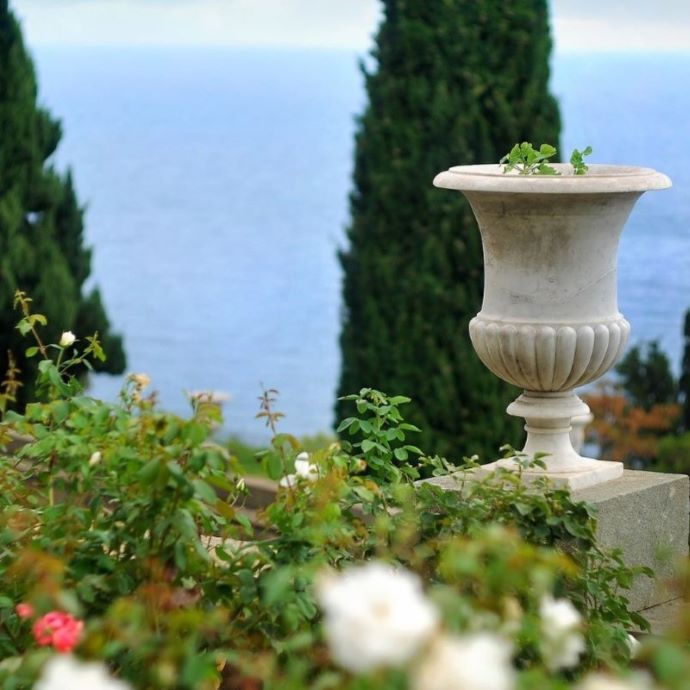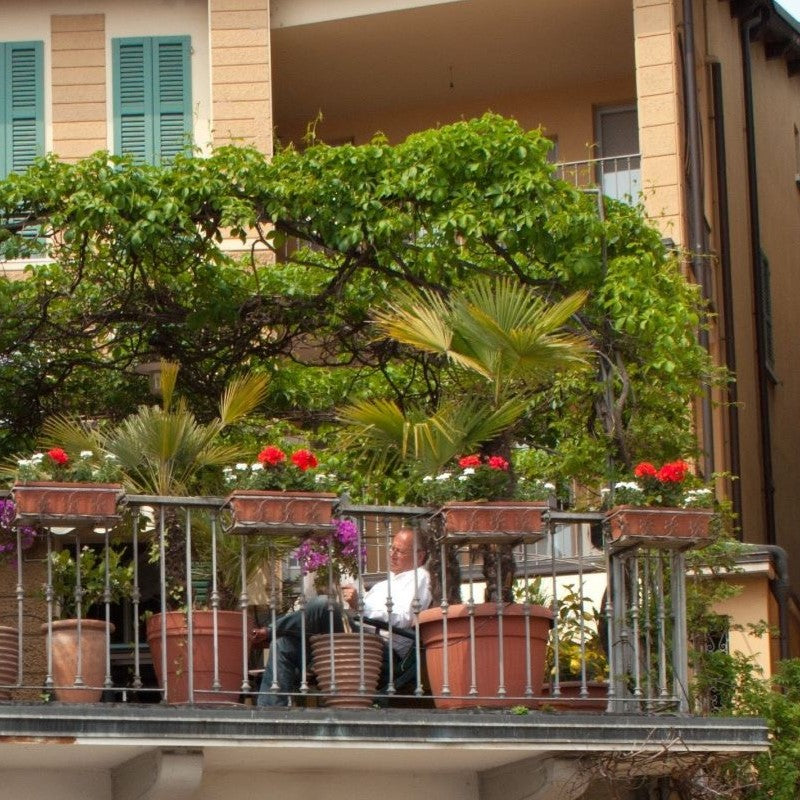Advice & Inspiration
Newby Hall - July Garden of the Month

Looking for planting inspiration to make your garden shine all year round? Every month we visit a garden which we think has nailed the best trends of the season, then report back with tips on which plants to use and how to recreate the look.
Newby Hall, near Ripon in North Yorkshire, was built in the 1690s by Sir Christopher Wren. This Georgian architectural gem contains priceless treasures including Gobelin tapestries, Chippendale furniture, Sicilian marble floors, a classical statue gallery and even an unpaid IOU from Charles II - which would now be worth a cool £400 million!
But we’re not here for that - we’ve come for the twenty five acres of award winning gardens and especially for the famous double herbaceous border, which forms a magnificent avenue between the house and the River Ure. At 172m, it may well be the longest in the UK, so we can’t think of a better place to get some perennial inspo for our own gardens - and yours! We were lucky enough to get some insider info from Newby’s extremely knowledgeable commercial director, Stuart Gill, and here’s what we found out…
The Highlights
The double herbaceous border
Summer is the time when flowering perennials are at their absolute peak, with different plants seeming to burst into life daily. Newby’s double border is in full, glorious bloom and will remain so until the first frosts of late autumn, thanks to strategic planting by the garden’s designer, Lucinda Compton, and her team. Lucinda has chosen a colour scheme of soft pastel perennials mixed with pops of vivid purple foxgloves, magenta and burgundy dahlias, lime green euphorbia and bright blue delphiniums. The border follows the layered pattern which allows each level of plants to shine - tall architectural plants including artichokes, poppies and cardoons at the back, colourful clumps of dahlias, achillea, eryngium and aster in the middle and a groundcover layer of low growing hardy geraniums, sedum, salvia and origanum at the front. With their choice of long flowering plants and different bloom times, the gardeners have made sure that there’s always something to see from May right through to September and that the border is never the same. Needless to say, the whole thing is absolutely buzzing with bees and butterflies!

Sylvia’s garden
The corridor of the herbaceous border leads to a multitude of differently styled garden ‘rooms’, each with its own unique theme, layout or colour scheme. Sylvia’s garden was designed to provide colour in May, when the house would have been full of guests for the York Races. Although the sunken garden and symmetrical paths hint at the formal style, the planting is loose, naturalistic and based around soft pastels - mainly pink and purple. The centrepiece of each bed is a standard Ballerina rose tree in pastel pink, and white benches have been placed in the shadiest nooks. Get the colour scheme instantly with our pink and purple perennial collection - don’t forget to add a seat in the shade!

The White Garden
I’d never considered planting an all-white garden - I tend to go for bold colours - but this was a real inspiration and something I’ll be trying out next year. As Stuart pointed out, white flowers are often the most fragrant, and the Osmanthus and Philadelphus certainly prove the point! I loved the use of tall white alliums and obelisks of climbing plants to provide structure, and while most of the impact of the colour scheme here comes from the contrast of white flowers and green foliage, the pink markings of the Actinidia foliage provide a nicely nuanced accent.
The Rose Garden
A formal rose garden is a thing of beauty; this one takes the best features of the formal style - different rose species in each bed, statuary, symmetrical paths - and softens them with white flowered trees and shrubs including Amelanchier and Pyrus, with Clematis viticella scrambling over wooden obelisks. The look is completed with daphnes, tree peonies and lilies, which compliment rather than compete with the stars of the show. The whole effect is romantic, relaxing and pleasing to all the senses.

Cornus Collection
Newby Hall is home to the national collection of Cornus - over a hundred of them! If you’re not familiar with these beautiful flowering trees, they’re a real find, dotted around the gardens in a naturalistic style and underplanted with woodland plants such as foxgloves and hostas (I’ve never seen so many healthy hostas with no slug damage - Stuart puts it down to the gardens’ population of hedgehogs). When we visited, the cornus trees were in full bloom, filling the gardens with big clusters of pink and white flowers. Our favourites were the layered Cornus contraversa (wedding cake tree) and the marbled pink Cornus kousa ‘Miss Satomi’. If you’re a real fan, you can even follow a cornus trail through the gardens - just ask for a booklet at reception.

The Orchard Garden
We noticed some rather tasty looking bottles of apple juice in the cafe, which Stuart told us is pressed from their own apples. The orchard garden is home to dozens of different apple varieties (including one unique to Newby, the Strawberry Pippin) as well as quinces, which are harvested and pressed on the premises. Every autumn they hold an Apple Day, which involves juice making, cider tasting and a contest in which people compete to throw apples the furthest across the river Ure and win a golden apple. I think it’s safe to say we’ll be back!

Get the look
You might not have 172m of double border to fill, but there’s plenty of perennial inspiration here at Newby for even the smallest garden. The border at Newby uses quite a reduced colour palette of purple, blue, pink, cream, silver and pastel yellow, which adds to the impression of space and order. This is balanced by their policy of letting the plants spread naturally and self seed, so you’ll get some variation in the planting and the odd foxglove popping up in the middle of the groundcover. Go with the flow - if a two-time winner of the Historic Houses Garden of the Year award can get away with it, so can you!
A white garden is the ideal planting scheme for a city garden, especially if you combine it with monochrome landscaping and furniture - the overall effect will be wonderfully relaxing, especially if you incorporate fragrant shrubs like those used at Newby. Try planting tall perennials such as white alliums and agapanthus in deep pots to give your garden structure and soften any fences or walls by growing climbers with attractive foliage like variegated Actinidia kolomikta or white flowers, such as clematis or jasmine.
Roses are a border favourite, most often found in a mixed border in the cottage garden style. Why not do something different with them, and incorporate a little formal garden style?
Do it like Newby and take the features you love - maybe the single species beds, the water features or the symmetry - and make it your own with your favourite trees, shrubs and perennials as a foil for the main event.
Formal gardens are not just for stately homes - check out these ideas that work in any space.
Cornus are such versatile and attractive trees, they really ought to be more popular. Most of them only grow to a height of 3m (and can be pruned smaller) so they’ll fit in any garden. The huge clusters of summer flowers are attractive to bees, butterflies and other useful pollinators. These are followed by glossy fruits that birds love to eat, and superb autumn colour.
You don’t need acres of land to start your own orchard - many fruit trees are now bred to fit into smaller spaces while still producing a great crop. You can even use apple trees as a low hedge. Underplant your trees with spring flowering species like Fritillaria meleagris - here the grass around the trees has deliberately been left long to allow these unique flowers to colonise the area in a natural way. Take a tip from Newby Hall’s gardeners and add a crabapple tree - this will pollinate your apple trees, giving you a bigger harvest, as well as attracting wildlife to your garden. The crabapple trees here are Malus Red Sentinel trained as espaliers - this is a space saving technique which also looks pretty next level - why not give it a go with our step by step guide?


















